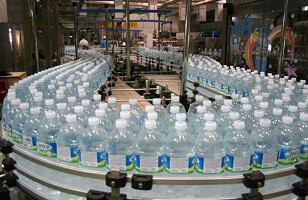©2019-2020 Zhangjiagang Links Machinery Co.,Ltd. All rights reserved.Site Map
- Mail Us: info@links-machine.com
- Call now: +86 158 5164 6970
New filling machine are maximizing output and simplifying changeovers.When picking a specific beverage filling machine, a good place to start is to know the exact characteristics of the liquid product. Is it a free-flowing liquid? This might work better with a timed-flow fill machine where the same volume of product is delivered each cycle. What if the product is more viscous? For that, a positive displacement liquid filler might be the way to go.
“Product specification is the most important parameter that we, at Bosch Packaging Technology, need in order to identify a suitable piece of filling equipment for our customers,” says Jonathan Viens, manager of North American sales and marketing. “We are talking about product characteristics, such as filling temperature, particulates, tendency of the product to splash or froth, etc.”

Because of the wide variety of products being packaged at plants, more processors are looking for fillers that can handle multiple concepts. Equipment providers understand this, but might not be able to deliver a panacea yet.
“Customers are demanding that new juice filling machine is more versatile and can handle a full range of varying products,” says Sundberg. As a result, the JBT Unifiller filler can handle products with a thin, watery consistency to thick, chunky products with high solid content and large particulates. “It is a unique volumetric piston filler with short product paths and larger porting.” Additionally, the fill nozzles are designed for specific applications and can be easily exchanged.
Many companies are moving to lighter weight packaging and using materials such as PET. Serac has adapted to this by developing the universal neck gripper, which moves the container by the neck through the machine. This can increase throughput and lower costs by reducing set-up time and maintenance needs.
“Accuracy is a function of many different parts of the filler,” Sundberg says. In other words, the machine must be robust to fulfill the criteria most important for processors, which are uptime and maximizing operational throughput with minimal maintenance.
Because the filling accuracy depends on so many factors, such as technology used and varying product characteristics, one method to improve performance is increasing automation.To address energy efficiency,beverage filling machine should equippe with servo drives as well as a proportional flow regulator. This technology allows processors to electronically adjust the flow speed of the liquid in the filling valve without the need for pneumatic air.
With many processors increasing the variety of products to fill, minimizing cleaning and changeover time continues to be a major focus. Fillers with automatic clean-in-place (CIP) capabilities have long been identified as a way to speed up the cleaning process. However, Sundberg says this is only possible if the filler bowl and valves have a self-draining design, which traditional piston fillers did not have, but the JBT Unifiller does.
Even though filling machines for water are trending toward more automation, equipment must be easy for operators to use. More attention is being paid to designing intuitive human machine interface (HMI) with panels that are easier to use and read.
“Another way to increase usability is to localize operator interactions to a specific zone,” says Tetra Pak’s Grainger. The company redesigned its filling machines to locate all modules on the ground level, thereby eliminating the need to climb stairs to execute commands on the second level. “This eliminates unnecessary movement and reduces the incidence of fall or other injuries.”